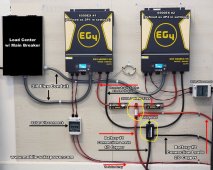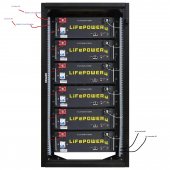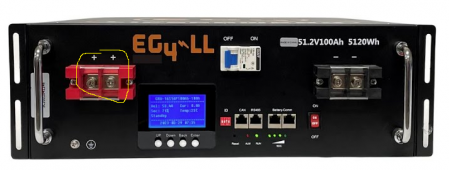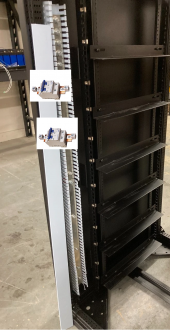In this thread, a forum member goes through the math to show that daisy chaining (with cables or bus bar) results in suboptimal currents from the parallel set of batteries.

 diysolarforum.com
diysolarforum.com

Calculation of parallel string battery currents
Hi, everybody! I'm a retired EE. I didn't want my EE skills to fade away after retirment, so I exercise them when I can. Whenever I see a non-trivial circuit analysis problem on one of various forums I frequent, I challenge myself to solve it. Recently I watched Will's video about current...







